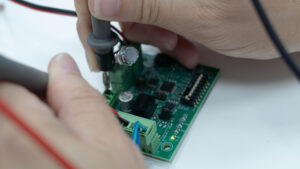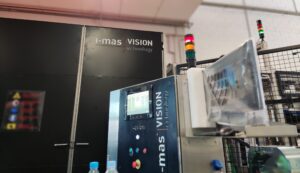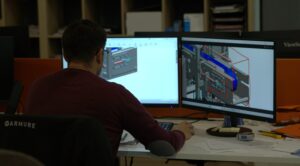In times when efficiency and sustainability are key, retrofit or retrofitting is an ideal solution for companies wishing to modernize or update their machinery without assuming the high costs involved in purchasing new equipment.
This method not only prolongs the service life of machines already in use, but also optimizes their performance, improves safety standards and makes them compatible with more advanced technologies.
Retrofitting consists of upgrading essential components, integrating automated systems and applying state-of-the-art software, enabling companies to remain competitive and, above all, to adapt to changing market needs.
What are the advantages of retrofitting?
Upgrading or retrofitting existing equipment has a number of advantages:
On an economic level, it is important to mention that the cost of a rebuild or retrofit is significantly lower than that of a brand new industrial machine. In addition, the ROI (return on investment) will be maximized, since the problem of depreciation of a new asset will be avoided.
Finally, another important factor is the increase in worker safety, as older machinery usually does not have up-to-date safety systems.
Retrofittings and rebuilds for Industry 4.0
The biggest challenge of older machinery is connectivity, i.e., its limited ability to collect and analyze data in real time.
Therefore, a retrofitting consideration should be to adapt machine parts to digital manufacturing, also called Industry 4.0.
The digitalization of production processes is already a fact and intelligent machines are improving data collection and decision making in all phases of manufacturing. Thanks to this technological evolution, we can talk about better supervision of production plants and predictive maintenance of machinery.
But, with all this in mind, the big question is: How can companies in the industrial sector make the most of their old equipment and machinery and adapt them efficiently to this digital renewal?
Currently, most industrial plants are obsolete and have difficulties in coping with increasing digitalization. What’s more, it is estimated that the average age of equipment is around 20 years, which means that a large part of the machines come from an era before the IIoT (Industrial Internet of Things). As a result, approximately 85 % of industrial plants are not yet networked.
Although replacing these machines is a good option, many of them have not reached their full amortization cycle. Moreover, it is a significant expense and, even with the benefits offered by digitization, the investment in a completely new industrial plant is rarely justified.
This is where retrofitting presents itself as a key solution, as this process is significantly more economical and faster than a total refurbishment of the machinery.
In conclusion, we can say that the real value of retrofitting is not only in upgrading equipment, but in the digital services it enables, such as plant monitoring and optimization, predictive maintenance and remote control, offering companies an important competitive advantage in the era of digitalization.
Strategies for retrofitting success
Performing this process with the right approach is a key point to achieve the highest possible efficiency.
First of all, before starting the retrofitting process, it is crucial to perform a detailed analysis of the plant’s needs. This includes identifying which equipment needs to be upgraded, what is the impact of current failures and, finally, setting clear objectives such as improving productivity, reducing downtime or increasing energy efficiency.
Second, it can also be useful to perform a thorough diagnosis of the condition of existing machinery to determine which components can be reused, which should be replaced, and which parts can benefit most from upgrading. This analysis is essential to avoid unnecessary expenses and maximize the use of existing resources.
When retrofitting, it is important to integrate advanced technologies, such as the Industrial Internet of Things (IIoT), smart sensors or automated control systems. These technologies improve connectivity, enabling remote management and continuous monitoring to optimize performance.
On the other hand, since retrofitting is an investment, it is essential to plan the budget properly. This includes assessing component costs, labor and potential downtime during installation, ensuring that the process is cost-effective and within financial limits.
Finally, after completing the process, it is essential to implement a monitoring system to evaluate the performance of the new technologies. This will help identify areas for improvement and ensure that the initial objectives are being met.
In conclusion, we can say that retrofitting has established itself as a strategic and cost-effective solution for companies seeking to modernize their industrial machinery without having to invest heavily in new equipment. This practice not only extends the useful life of machines, but also optimizes their performance and prepares them for the challenges of Industry 4.0. Moreover, it can be applied to machines of all types, from the simplest equipment to more complex machining centers. Some of the most common examples are: lathes, milling machines, machining centers, ovens, CNC, press brakes, cutting machines, extrusion machines, packaging lines…
The retrofitting technique at i-mas
In the i-mas engineering department, we use this technique both with new customers and, above all, with regular customers.
We adapt to the specific needs of the project. This may involve from the updating of machines to the incorporation of artificial vision in equipment that did not have it, or the incorporation of a robot or automatic manipulator.
On the other hand, normally in almost all cases we also incorporate a software update.
Want to learn more about our services? Contact us or visit our projects section!



